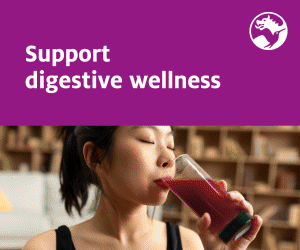DolCas Biotech has released pharmacokinetic data in support the claim its Curcugen curcumin extract has 39-fold-enhanced bioavailability of free curcumin. The 17-subject randomised, double-blind, crossover study published in the journal Medicine by Sanjib Panda, MPh, et alia, evaluated the dispersible, 98.5% native turmeric (50% curcuminoid concentrate) formulation, against conventionally extracted C-95 (also a 95% curcuminoid extract) to determine the degree of enhanced absorption by the company’s version.
In concentrating curcuminoids to a 50% standard, Curcugen co-extracts turmeric-native resins that are polar in nature and offers the patented “Self-D” bioenhancer-like benefits that facilitate dispersibility. Owing to its 98.5% turmeric-derived base, Curcugen also contains turmeric natives, like polysaccharides and essential oils, which contribute additional value to both bioavailability and bioactivity.
Free curcumin analysis is a direct measurement of the proportion of curcumin ingested that is absorbed across the intestinal barrier.
“While Curcugen is not the first curcuminoid ingredient to assess for free curcuminoids, it is one of the first to assess it within the context of a pharmaceutically-aligned study protocol,” said Dr Shavon Jackson-Michel, Director of Medical & Scientific Affairs for DolCas. “Dispersion was the principle mechanism enacted to overcome the challenge of curcuminoid absorption.”
The total curcuminoid analysis of individual and composite curcuminoid analogues also was assessed in this study. The enhanced absorption (as determined by the difference in area under the curve) over the study duration yielded enhanced bioavailabilities of 49.5-, 43.5-, 46.8-, and 52.5-fold, when compared to the C-95 reference.
“Curcuminoid conjugates are intestinal and liver metabolites and considered both inactive and intermediate in terms of their functionality. To be effective, they must be liberated, and while this process is simulated predictably outside the body, the literature suggests that inside the body the process is highly variable,” Jackson-Michel added.
The natural process of deconjugation occurs under distinct conditions, inclusive of, but not limited to, an inflamed state or lowered pH, and in the presence of certain white blood cells, or in kidney tissues. This study sought to distinguish this unsettled concept of free vs. total curcuminoid analysis and its relationship to marketed claims that must be evaluated contextually.
Tetrahydrocurcumin is a metabolite of curcumin that, unlike the no-to-low activity curcuminoid-conjugates, expresses notable bioactivity, especially via its antioxidant and anticarcinogenic activities. When compared to C-95, it was found in 31-fold higher quantities in the plasma with Curcugen.
“Given C-95’s known resistance to absorption, equivalent concentrations of curcuminoids between it and Curcugen were assessed in accordance with acceptable pharmaceutical guidances for bioavailability study,” says DolCas CEO K. G. Rao. The study was designed to highlight and align with published best practices in curcuminoid pharmacokinetics, including minimum and matching dosing between test and reference products, analyte selections and proper definitions (i.e. free vs. total; analogues vs. metabolites). This was inclusive of preparation methods both with and without exogenous deconjugation steps; the need for internal standards use; neutral fasting and feeding conditions for subjects; and the use of plasma analysis instrumentation that offered the best accuracy and consistency.
“Curcuminoid bioavailability also was assessed over a 24-hour period — a rarity among studies backing other bioavailability-enhanced curcumin formulations on the market,” Jackson-Michel points out. “The 24-hour assessment, evidenced a primary peak of enhanced free curcumin at approximately 1.5-2 hours after intake; a moderately high second peak at about 8-hours post intake; and low but notably higher plasma levels over the duration of the 24 hours when compared to C-95.”




